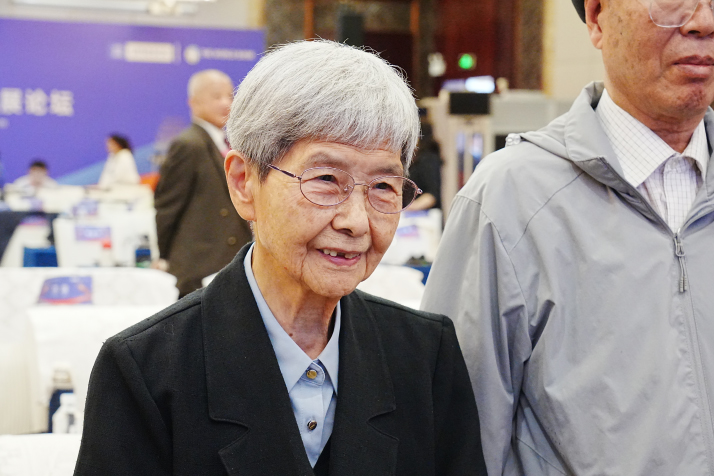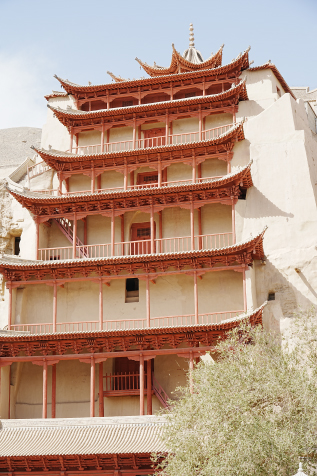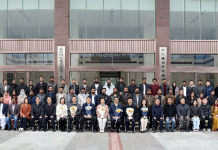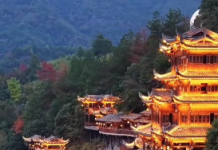Tobey was one of thousands of visitors exploring the Mogao Caves in Dunhuang, Gansu Province, on September 5. Before their cave exploration, she and her fellow travelers were treated to two films: Millennium Mogao and Dreams of the Buddha’s Palace at the heritage site’s Digital Exhibition Center. The immersive cinematic experience provided them with an initial glimpse into the history, mural art and sculptures within the caves.
The two films are the outcomes of the Dunhuang Academy’s efforts to use digital technology to preserve and present the precious cultural heritage.
Digital Dunhuang
The Mogao Caves were excavated over a period spanning approximately 1,000 years, starting from the year 366. The site’s 735 caves house over 45,000 square meters of preserved murals and more than 2,400 colored sculptures, which are the world’s most extensive and well-preserved treasury of Buddhist art. In 1987, the Mogao Caves were inscribed on the UNESCO World Heritage List as a cultural heritage site.
Preserving cultural heritage while ensuring accessibility presents challenges worldwide, and the Mogao Caves are no exception. Climate change, including rising humidity and increased rainfall, has threatened mural preservation, and visitors’ exhaled carbon dioxide damages the murals. Fan Jinshi, Honorary President of the Dunhuang Academy, came up with the solution—Digital Dunhuang.

In the late 1980s, Fan proposed using digital technology to permanently preserve Dunhuang’s murals and sculptures. With support from the national and provincial science and technology authorities and other organizations, the Dunhuang Academy initiated research projects on applying computer technology to cultural heritage preservation. These efforts laid the foundation for digitalizing the Mogao Caves.
In 2006, the Dunhuang Academy established a digital center, which overcame numerous technical challenges, such as precise cave lighting, high-quality mural imaging and image stitching control.
The Mogao Digital Exhibition Center opened in 2014, featuring a 4K film, Millennium Mogao, and the world’s first 8K dome film, Dreams of the Buddha’s Palace. These innovations marked a significant step in balancing heritage preservation and utilization.
Dr. Duong Bich Hanh, Programme Specialist for Culture of UNESCO Multisectoral Regional Office for East Asia, praised the initiative, saying, “The Dunhuang Academy used technology to ensure everyone could watch videos before entering the caves, based on thousands of hours of scanning and image reproduction.”
In 2016, the Digital Dunhuang repository went live, featuring high-definition images and panoramic tours of 30 select caves online. By late 2022, the digitalization efforts had achieved remarkable milestones in mural collection, image stitching, panoramic tour production, 3D reconstructions and digital scanning of historical archives.
“We, the people, have devoted our entire lives to the battle against destruction, aiming to preserve the Mogao Caves for a little longer, and then even longer,” Fan said. Now, Digital Dunhuang ensures the eternal life of the Mogao Caves.
Management and collaboration
As digital technology promises the preservation of the Mogao Caves, the physical site demands meticulous management. Extensive research by the Dunhuang Academy into factors affecting the murals has shed light on their preservation. Balancing visitor safety, comfort, and the preservation and appreciation of the cultural relics, they established a daily limit of 6,000 visitors—a vital threshold. This limit accommodates the fluctuations in temperature, humidity and carbon dioxide levels caused by changing number of visitors. To address these challenges, the Dunhuang Academy deploys technological solutions for continuous cave environment monitoring and visitor flow management.
Hanh praised these preservation efforts, saying, “The conservation work of the Dunhuang Academy is truly outstanding. All the decisions were based on data and collection of information over a long period of time. For example, they set the maximum capacity for the caves at 6,000 people per day based on measurements of carbon dioxide emissions and temperature. This is a highly technological approach.”
The Mogao Caves represent not just a UNESCO World Heritage Site but also a repository of intangible cultural heritage. On September 7, UNESCO, the World Bank and the Gansu Provincial Government jointly hosted the Safeguarding Living Heritage for Sustainability Forum. Experts and scholars from across the globe gathered to share their experiences in safeguarding cultural heritage.
During the forum, UNESCO acknowledged the remarkable contributions of Fan and the Dunhuang Academy to the protection of this UNESCO World Heritage Site, honoring them with Outstanding Contribution Awards.
The Dunhuang of the past was a vital hub for the exchange of civilizations among ancient nations. Today, it offers a sustainable development model for preserving cultural heritage worldwide. Shahbaz Khan, Director and Representative of UNESCO Multisectoral Regional Office for East Asia, emphasized the significance of collaboration, especially on the 20th anniversary of the UNESCO Convention for the Safeguarding of the Intangible Cultural Heritage and the 10th anniversary of the Belt and Road Initiative. He emphasized the need for nations to unite in protecting and nurturing intangible cultural heritage in the modern era, ensuring its continued existence and growth.
He Xiaozu, deputy head of the Publicity Department of the Communist Party of China Gansu Provincial Committee, told the forum that Gansu stands ready to share its experience in the protection of intangible cultural heritage with other organizations around the world. He suggested establishing a collaborative platform to achieve strategic alignment, complementing strengths, promoting integrated development and sharing interests. This platform would serve as a supporting platform for heritage preservation, cultural and tourism exchange, and cooperation, ultimately constructing a stable and multidimensional mechanism for the protection of intangible cultural heritage.
In addition to protecting cultural relics, utilizing the cultural and tourism industry to promote economic development is also a key focus. Tian Xuegong, Deputy Director of the Gansu Provincial Department of Culture and Tourism, emphasized the importance of promoting the integration of intangible cultural heritage and tourism development and called for developing unique tourism or service projects based on intangible cultural heritage. “While the preservation of intangible cultural heritage from around the world presents a formidable challenge, the path ahead is clear as long as we persevere,” Tian said.

The Mogao Caves stand as a testament to the harmonious convergence of tradition and technology. Through digitalization and careful management, this UNESCO World Heritage Site is thriving. These preservation and management practices can provide valuable insights for the safeguarding of other cultural treasures worldwide. –The Daily Mail-Beijing Review news exchange item





